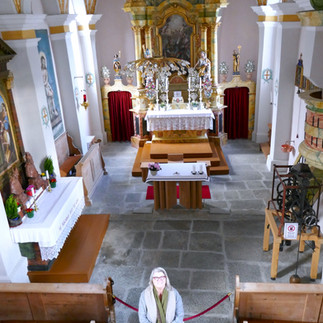
My husband and I recently returned from a trip to Europe. We were visiting his family in northern Italy and decided instead of landing in Milan and taking the train north, we would fly to Munich and drive through Austria, the Dolomites, Südtirol and into the Trentino area.
This was the first time since the pandemic that I have traveled to Europe. I was surprised and appalled by the increase in the tagging/graffiti on historic buildings. The increase in graffiti was everywhere, but I especially noticed it on architectural and historic buildings.
Europe has a history of graffiti, often in a sign of protest, for example in Berlin when the city was separated by the wall. Or you see graffiti on abandoned buildings, by trains, or industrial settings.
On several occasions during this past trip, I just stopped in my tracks when I saw the graffiti, staring in disbelief that a person would even think that they should deface something that has been around for centuries. But then again, maybe I shouldn’t be too surprised. I live in a beautiful southern California where it is not uncommon to see that people have carved messages into coastal bluffs, damaged and carved into desert rock formations or Torrey Pine trees, or spray-painted messages on public walkways.

This past trip there were three very different acts of vandalism via graffiti on historic buildings. The first one I saw was on a building that we were passing on our way for dinner at Stiftskeller in the old town of Innsbruck. The building caught my eye because of its architectural style. I paused to look at the building and read the plaque that indicated the building was from 1480. As my eyes went from reading the plaque to gazing at the arched wooden door, I saw graffiti! I snapped a picture, not a great picture but it clearly shows that someone felt the need to vandalize a building that has stood through world wars and centuries of passersby.
The second was in Trento. Originally a Celtic city, Trento was conquered by the Romans in the first Century BC. In 1027, the Emperor of the Holy Roman Empire established Prince Bishops who ruled Trento until Napoleon conquered the city in 1801. In 1814 Trento was assigned to the Habsburg Empire.
This picturesque historic city serves up an old town with buildings adorned with frescos, yes frescos. And yup, you guessed it, there are people out there who think it is important to tag these buildings.

Third was in Munich. I was out strolling while my husband was in the hotel dealing with business emails. I decided to stop into St. Michael Jesuitenkirche. Completed in 1589, St. Michael is the first and largest Renaissance building north of the Alps. As I reached for the door handle on a side entrance door, again I took a breath…really, I thought to myself as I snapped the picture you see. Vandalism etched into the door.
I appreciate street art, large public murals, and planned public graffiti art. This form of art has a place and can be a conduit to bring communities together, celebrate culture and ideas while enhancing public spaces with visually interesting, cutting-edge art.
Unfortunately, graffiti and tagging, as we typically think of it, is simply a form of vandalism. It defaces historic buildings, damages iconic relics or architectural gems, and makes cities look blighted. I believe most of us think that littering, damaging natural landscapes or defacing public spaces is unacceptable.
So, what can we do about it? I’ve decided I will focus on beauty, architecture, design, colors, details and the awe-inspiring work of creative individuals and artists. I will embrace the history, marvel at the talent and be witness the connection to the past and a sense of place that these buildings and art pieces offer, and hope that those who might damage these places and spaces, instead take pause and be mindful of their surroundings.
Churches from left to right: Church of S. Nicolò in Issengo, Servitenkirch hl. Josef, Hofkirche






Comments